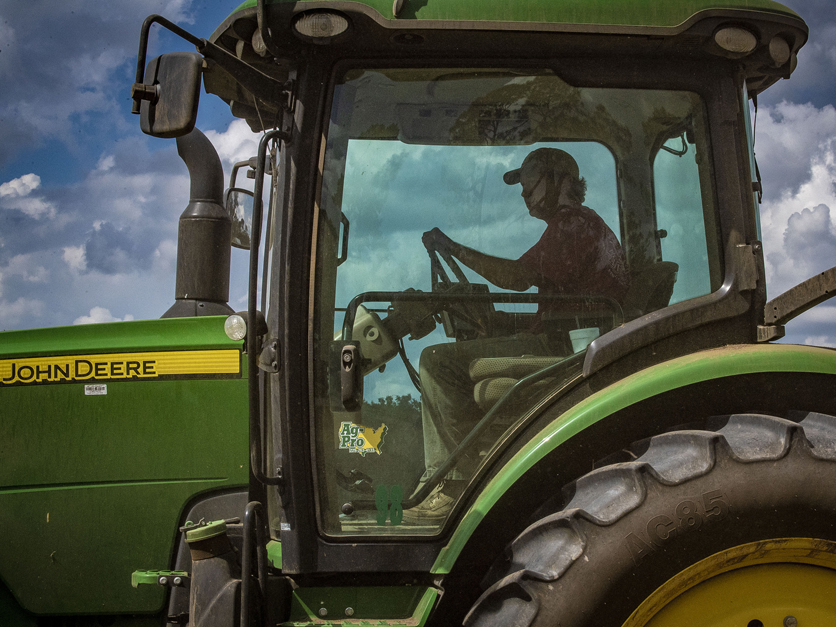Agriculture Secretary Perdue is planning to head over to the White House this week to make a presentation on how the department is proposing to dole out $15 billion to $20 billion in what is tentatively being called the “Farming Support Program” for producers who continue to bear the brunt of President Donald Trump’s trade war with China, government officials tell Agri-Pulse.
So far, it’s looking like at least some farmers may be getting bigger payments than they did under the first trade assistance package unveiled by USDA last year. Bloomberg reported Tuesday that USDA is considering payments of $2 per bushel for soybean farmers, 63 cents per bushels for wheat, and 4 cents per bushel for corn, but USDA is casting doubt on those numbers.
After first refusing to confirm or deny the reported numbers, USDA later issued a statement critical of “inaccurate media stories.”
The previous $12 billion trade package contained direct payments under a Market Facilitation Program that included $1.65 for soybeans, 14 cents for wheat, and 1 cent for corn. There were also payments for cotton (6 cents per pound), sorghum (86 cents per bushel), dairy (12 cents per hundredweight), hogs ($8 per head), almonds (3 cents per pound) and fresh sweet cherries (16 cents per pound).
USDA officials said Tuesday that the new trade mitigation package still isn’t finished.
“Details on the new farming support program will be forthcoming shortly, but we want to be clear that the program is being designed to avoid skewing planting decisions one way or another,” says the latest USDA statement. “Farmers should continue to make their planting and production decisions with the current market signals in mind, rather than some expectation of what a farming support program might or might not look like based on inaccurate media stories.”

USDA Chief Economist Rob Johansson
Any new payments are widely expected to be decoupled from this year’s planting in order to prevent the aid from impacting what farmers plant.
In the meantime, Perdue’s top lieutenants at USDA — led by Chief Economist Robert Johansson — are collating last-minute pleas by farm groups on behalf of their members and making the calculations to distribute the Trump administration’s second trade aid package in less than a year.
USDA officials have met with farm groups representing producers of corn, dairy, fruits, vegetables and other crops to listen to their suggestions. Sources say USDA officials have promised they are exploring different options and acknowledged that some farmers felt they received too little in last year's package.
Perdue told reporters last week he believed the rollout of the previous trade mitigation package — a three-phase program that included direct payments, commodity purchases and funds for foreign marketing — was well executed, but also noted “there were some issues vis-à-vis the different commodity groups and the disparity of which the remuneration was calculated.”
The National Association of Wheat Growers (NAWG) is one group urging USDA to consider more than just the negative impacts of Chinese tariffs.
In a letter sent to USDA officials, NAWG urged the USDA to consider lost sales to Mexico and the lack of an agreement with Japan – putting U.S. wheat farmers at a disadvantage to competitors in Canada and Australia. “Unfortunately, the last trade aid round of $0.14 didn’t do enough to help farmers with the damages they’ve suffered,” noted a spokesperson.
NAWG also urged the administration to provide flexibility in how a farmer’s production is calculated – such as using the higher of a farmer’s Actual Production History from participation in the Federal Crop Insurance program or yields used when participating in the Price Loss Coverage (PLC) program. “This change would ensure more farmers are adequately supported by a MFP payment,” the group argued.
If the rate for wheat reported by Bloomberg proves accurate, wheat farmers will have gotten a sizable boost.
Groups like the North American Meat Institute and the National Milk Producers Federation also want USDA to consider the hundreds of millions of dollars they say their members have lost because of Mexican tariffs. Those tariffs on pork, cheese, potatoes and apples — retaliation for U.S. import taxes on steel and aluminum — have just been lifted, but the damage has been done in the form of lost sales and customers.
The reported 4 cents per bushel for corn is three pennies more than the farmers got in the last trade aid package, but it's unclear if that will be enough to satisfy them. The fact that the National Corn Growers Association has released a statement saying that “trade disruptions had cost $0.44 (per) bushel” suggests they won’t be satisfied.
Rice farmers would just like to get a payment. USDA agreed to buy up $48.1 million of rice in the previous package, but no direct payments were given out.

Betsy Ward, USA Rice
China, after more than two decades of delay, finally opened up its market to U.S. rice this year. That was reason for celebration, but there have not been any sales and that’s believed to be largely because of China’s 25 percent retaliatory tariffs.
“We had a group of Chinese buyers actually coming to our USA Rice Millers annual convention … in June and they have canceled,” USA Rice President and CEO Betsy Ward told Agri-Pulse. “It shows you where the state of the relationship is, at least temporarily.”
The USDA also purchased millions of dollars of fruits and nuts from California producers and even made payments to almond growers, but lawmakers from the Golden State are lobbying USDA for more.
“Our walnut growers can’t become collateral damage in this trade war — our local folks have already lost millions in revenue and were left out of the last round of funding,” said Rep. Josh Harder, D-Calif., in a statement. “Walnut producers don’t want to have to rely on bailouts, but if farmers of other crops are getting a hand, we want to make sure our farmers qualify as well.”
The USDA actually did buy up $34.6 million of walnuts — nothing close to the $600 million in losses that Harder and other lawmakers claim — but no direct payments were made under the Market Facilitation Program portion of the package.
For more news, go to www.Agri-Pulse.com.


